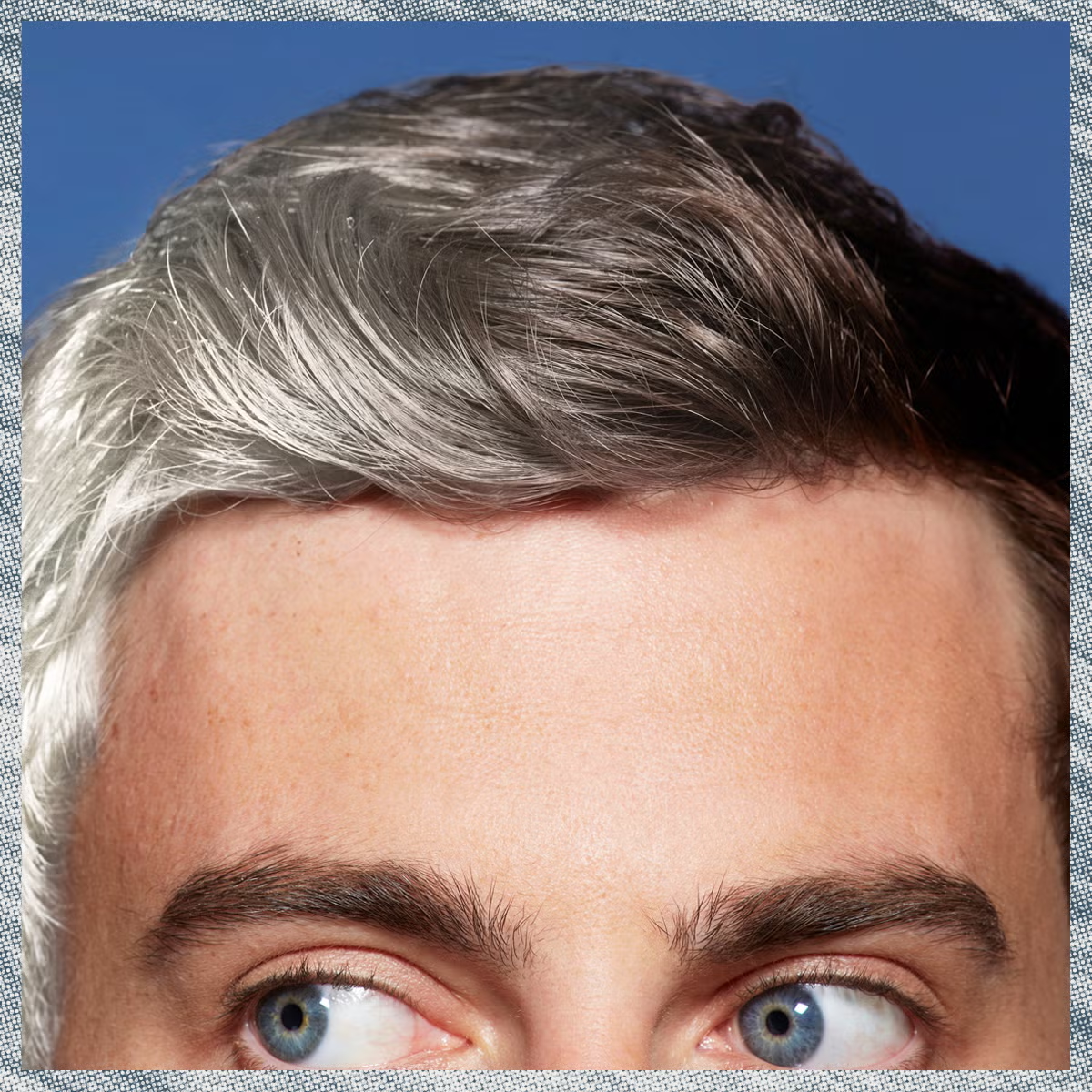PITT. CLOONEY. DENZEL in Gladiator II. There’s certainly nothing wrong with leaning into silver fox status. But who among us hasn’t wondered, as the hair collects on the barber cape, if there is a way to trade out some salt for more pepper? Dye is temporary. (And messy.) Supplements are shady. (And $$$.) Cue-balling is an option. (But cold.)
Why hasn’t science fixed this yet? Actually, researchers are zeroing in on a solution. The result could mean slowing, and one day even reversing, grey hair. Here’s the idea behind all the geeky science – and what to do until it becomes reality.
Why hair goes grey
For starters, don’t blame the hair itself. Within a hair follicle (the part of the hair attached to the skin) lives a type of cell called melanocyte. These cells determine skin and hair color. As you age, melanocytes “become less active, leading to hair that lacks pigment and looks grey, silver, or white,” says New York–based dermatologist Dr. Morgan Rabach, MD.
How to reverse greying remains one of those bodily mysteries that no one has quite cracked yet. What’s complex is that the melanocytes in a hair follicle don’t show the same pattern of aging as the ones in our skin, Dr. Rabach says. “We believe the reduction in activity is a mixture of genetics, oxidative stress, and the depletion of the melanocyte stem cells over time.”
To complicate things even more, grey hair is a polygenic trait, meaning it takes many genes to activate. (We warned you that this was going to get geeky.) Untangling which genes have what effect on hair colour makes reversing grey hair difficult to figure out, says Dr. Beth Sullivan, PhD, a professor of molecular genetics and microbiology at Duke University. This gene variability explains why one sibling may go grey earlier than another even though they have similar genetics.
Then there’s the very valid idea that stress can lead to prematurely going grey. “Free radicals, which are oxygen molecules that lose their electrons from stress and damage, cause signalling in the cell that can lead to premature aging,” says Dr. Rabach. She doesn’t mean just job or family stress either. Lots of factors can stress your body (and hair follicles) and lead to free radical formation: pollution, diet, UV rays, smoking, and more – which makes you curious…
Can greying be stopped?
In the short term, yes, Studies have found that alleviating the stress of difficult events or conditions – such as relocating or the sudden loss of a job – can re-pigment grey hair. “It’s more of a temporary fix,” says Dr. Robert Finney, MD, a dermatologist in New York City. “Like if someone went through a really stressful event and got a few extra greys, if you remove the stressor, then they get better.” But in the long term, the answer is maybe. The current scientific consensus is that, barring extreme events and underlying diseases, “the onset of greying hair is largely genetic and age-related,” says Dr. Rabach.
Some scientists are making headway by reactivating nonfunctioning melanocytes, and others are trying to stimulate the follicle with stem cells, but both methods are in their too-early-to-tell stages. But then there’s palmitoyl tetrapeptide-20. This new hair-care ingredient has promise. It’s biomimetic, which means that “it acts as an agonist of the pigment process and mimics our own peptide that stimulates our melanocytes,” says Dr. Finney.
Some early studies back up palmitoyl tetrapeptide-20’s effectiveness, and some brands (Arey, for one) are already launching products with it, like scalp serums that claim to slow the graying process and re-pigment hair. As with any product, though, absorption is key, says Dr. Finney. “Palmitoyl tetrapeptide-20 is a large molecule that doesn’t penetrate through the epidermis as well,” so getting it to melanocytes might be tough, he says.
One essential for reversing grey, even with palmitoyl tetrapeptide-20, is that the hair still needs some active melanocytes to stimulate. Nothing has been shown to re-pigment hair that is completely white. So while total re-pigmentation may still be science fiction, there are very real steps you can now take to delay the grey.
Go from grey to no way with these colour correctors
Eating a healthy diet, managing stress, and using mild hair-care products may help delay (but won’t prevent) the greying process, says New York-based dermatologist Dr. Rabach. Which products, you ask? There are three she primarily recommends, and they’re all serums. First, the Arey To The Root Serum because not only does it strengthen and volumise hair, but its Mela-9 complex (which contains palmitoyl tetrapeptide-20) may help slow graying.
Then there’s the Leonor Greyl Energizing Serum, which is packed with antioxidant green tea, protective maca extract, and Indian gooseberry, a natural anti-ager that could help delay greys. Rounding out her trio of serums is Vegamour Gro Ageless Anti-Gray Hair Serum. In this serum, you’ll find palmitoyl tetrapeptide-20, as well as caffeine, to help reduce oxidative stress.

Arey To The Root Serum

Leonor Greyl Energizing Serum

Vegamour Gro Ageless Anti-Gray Hair Serum
Meet the experts
- Dr. Morgan Rabach, MD, a board-certified dermatologist at LM Medical in New York.
- Dr. Beth Sullivan, PhD, a professor of molecular genetics and microbiology at Duke University.
- Dr. Robert Finney, MD, a board-certified dermatologist and founder of Soho Skin and Hair Restoration in New York City.
This article originally appeared on Men’s Health US.
Related:















